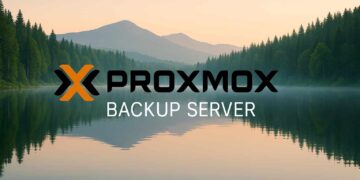This session was the first of day 2 at TechEd and presented by CJ Williams and Gabriel Silvia. He started off with a quick recap of Windows Server 2012 networking, with the remainder of the session on Windows Server 2012 R2 networking enhancements. Given all the major enhancements in 2012, the R2 release focuses on adding additional ease of use, scalability, and performance improvements.
Windows Server 2012 Recap
- Native NIC teaming
- DHCP failover
- SMB 3.0 multi-channel
- Hyper-V extensible switch
- QoS
- PVLAN support
- Hyper-V network virtualization
- SR-IOV support
- IPAM, resource metering, etc.
Windows Server 2012 R2
- Learning from MS datacenters: Cutting costs (maximize resource utilization), choice and flexibility matter, agility and automation are key
- Three big R2 focus areas: Cloud scale performance and diags, comprehensive SDN, core infrastructure enhancements
Cloud Scale Performance – vRSS
- Virtual RSS
- In 2012 VMs restricted to 1 process for network traffic
- In R2 vRSS maximizes resource utilization by spreading network traffic across multiple vCPUs
- Now possible to virtualize traditionally network intensive applications
- Requires no hardware upgrade and works with any NICs that support VMQ
- Provides near line rate to a VM on existing hardware
NIC Teaming Enhancements
- 2012: Provided fault tolerance and aggregrate bandwidth
- R2 introduces a new dynamic mode. Balances based on flowlets
- Applies to outboud and inbound network flows
- In 2012 a TCP flow would be pinned to one NIC. In R2 it breaks up the TCP flow and spreads across all NICs
- Can provide big improvements with large data transfers
Extended ACLs
- In 2012 had basic allow/block ACLs. Not very rich
- R2 provides filters based on network address, application port or protocol type
- Stateful packet inspection
- Allows or blocks traffic for specific workloads
Remote Live Monitoring
- In 2012 remotely monitoring traffic is not simple
- R2 enables mirror and capture network traffic for remote and local viewing
- GUI experience with Message Analyzer. Similar to netmon GUI experience
- supports remote offline traffic captures
- Filtering based on addresses and VMs
Demos:
- Showed that incoming network packets on 2012 were pinned to one NIC
- Showed with 3 VMs that TCP traffic was evenly load balanced across all four pNICs
- Showed in 2012 5.4Gbps bottleneck on 10Gb NIC, because traffic pinned to one vCPU. Showed that vRSS spread the load across all vCPUs. Throughput jumped up to 8.4 to 9.6 Gbps.
- New Powershell commandlet test-netconnection. Combines ping, traceroute, and provides more detailed information. Can be configured to use different ports and protocols (SMB, RDP, etc.) for testing. Available in Windows 8.1 too.
Comprehensive SDN (Software Defined Network)
- Focus areas: Flexibility, automation, control
- 2012: Hyper-V network virtualization, Hyper-V extensible switch
- R2: Network physical switch management (via OMI), built-in gateways
- DMTF standards utilization for managing physical switches
- MS believes in both physical and virtual management with their SDN solution
Hyper-V Network Virtualization
- Uses NVGRE standards protocol for packet encapsulation
- Solves VM mobility issues (migrate VM beyond L2 domains)
- Ability to import customer IP addresses and network topology
- Ability to use same IPs in test/dev and production environments on the same physical network
- NVGRE uses 24-bit identifier, and are unique within the datacenter. Removes 4096 VLAN limitation
- R2: Dynamic learning of customer addresses: Allows for highly available hosts using guest and host clustering. Ability to do DHCP within a customer network.
- R2: Performance enhancements: NIC teaming integration and NVGRE task offload enabled NICs
- Partners are delivering on NVGRE task offload (Emulex, etc.) and providing near line rate NVGRE
- R2: Enhanced diagnostics of virtual networks
Hyper-V Extensible Switch
- Cisco Nexus 1000v for Hyper-V is now RTM
- R2: Moved Hyper-V network virtualization into the switch, so extensions can process the provider and customer packets
- R2: Hybrid forwarding: Hyper-V networking and third-party can both process different types of packets
- R2: Forwarding extensions can modify packet headers on both ingress and egress
- Third parties can now use their full network virtualization (e.g. Cisco VXLAN)
Standards Based Management
- Standards-based CIM model
- Switches running Open Management Infrastructure (OMI)
- Enables powershell management of physical network switches
- Problems solved: automate common network tasks (such as VLAN validation across Hyper-V networking and physical switches)
- Logo program enables customers to buy switches that “just work”
- Enables cloud plug and play of switches and de-couples the management plane from the data plane
Built-In Gateways
- 2012 had no built-in gateways and required third party add-ons
- R2: Built-in gateway with three major capabilities: Multi-tenant multi-site VPN gateway; NAT gateway for internet access; forwarding gateway for within the datacenter
Core Infrastructure Enhancements
- 2012: IPAM tool in-box
- R2: Manages physical and virtual address spaces
- R2: Imports and exports network configs automatically through SC VMM plug-in
- Enables synchronization and AD site and subnets with IPAM
- Lets admins define user roles, access scope and access through role access controls




